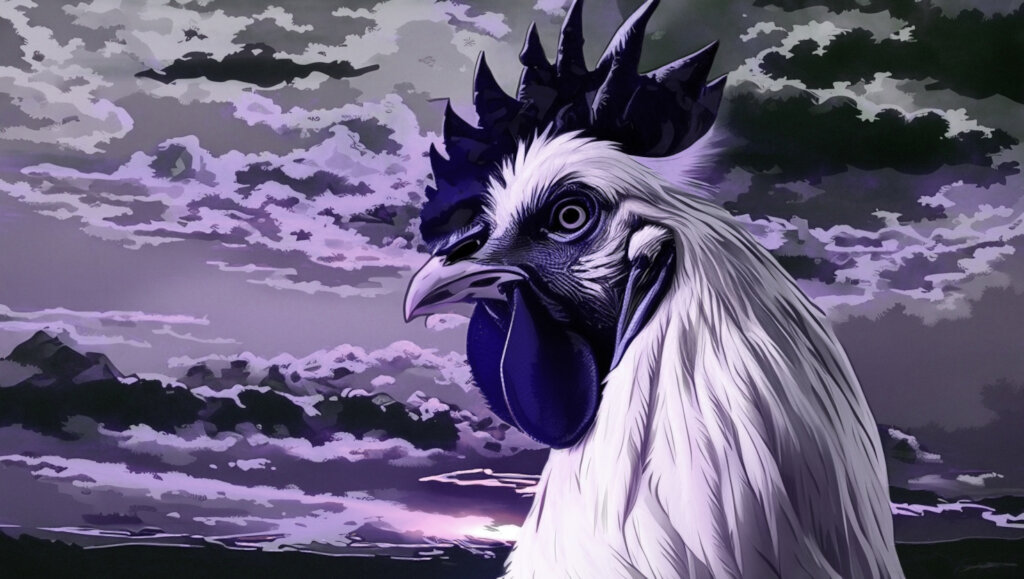By pattrice jones | Coordinator, VINE Sanctuary
Greetings, and thank you again for supporting The Rooster Project at VINE Sanctuary!
We're celebrating our 25th anniversary this year, and that means that all year we'll be remembering the roosters who made the sanctuary possible.
It all started when cofounders Miriam Jones and pattrice jones found a chicken in a ditch. They thought she was a hen but he turned out to be a rooster. You can read his story here.
This all happened on the Delmarva Peninsula, the part of the United States where factory farming of chickens was invented and where the industry kills more than a million birds every day.
That first bird turned out to be so charming that pattrice and Miriam contacted their local humane sociaty to tell them that they would gladly take in any other birds people found by the roadside.
That led to the arrival of two more roosters who would prove to be very important to the development of the sanctuary: Chickweed and Che.
If it weren't for people like Viktor, Chickweed, and Che, there would be no VINE Sanctuary today.
Later this year, we'll be sharing the story of a group of 24 roosters who came to the sanctuary and shook up everything, ultimately teaching us the things we needed to know to develop our method of rehabilitating roosters rescued from cockfighting.
But, this spring, we've been focused on another form of harm to roosters: The egg industry.
It's easy, when thinking about all of the harms that egg factories do to hens, to forget that the egg industry also harms roosters—by killing them right after they hatch. For every hen that a hatchery has sold to an egg factory or backyard hen-keeper, there is at least one dead male chick.
Here's how it happens:
All chicks hatched at hatcheries suffer grievously from the absence of their mothers. When brooding eggs, mother hens communicate with their developing chicks. Chicks in incubators hear only a mechanical hum. Hatchlings who emerge under their mothers immediately seek the warmth under her wings and soon begin climbing all over her, interacting with her constantly whenever they are awake. Hatchlings in classrooms and factories awaken only to the cries of other chicks, all of whom are calling constantly for mothers who never come.
At the hatcheries serving the egg industry, the horrors continue when chicks are loaded onto conveyor belts to be sexed. Those deemed female are shunted to shipped to farms, factories, farm stores, or backyard hen-keepers. Those deemed male are killed or left to die. The methods of killing are often gruesome, as is the practice of piling live rooster chicks into trash cans or dumpsters and leaving them to starve to death.
We all can help to do something about this by reducing consumer demand for eggs. Right now is a good time to take action, because many consumers are balking at the high cost of eggs.
We've attached a new black-and-white brochure that you can download to print and give to your not-yet-vegan friends and family. It gives the basic details of 26 different egg alternatives and also provides a QR code to our Instead of Eggs page, which gives more details about each.
Thank you again for supporting The Rooster Project and roosters here at the sanctuary. We'e just finished expanding one of the areas where many roosters flock together. We couldn't do it without you!
Project reports on GlobalGiving are posted directly to globalgiving.org by Project Leaders as they are completed, generally every 3-4 months. To protect the integrity of these documents, GlobalGiving does not alter them; therefore you may find some language or formatting issues.
If you donate to this project or have donated to this project, you can receive an email when this project posts a report. You can also subscribe for reports without donating.
Support this important cause by creating a personalized fundraising page.
Start a Fundraiser